Parker Solar Probe Completes Space Environment Testing
Posted on 2018-03-26 15:35:00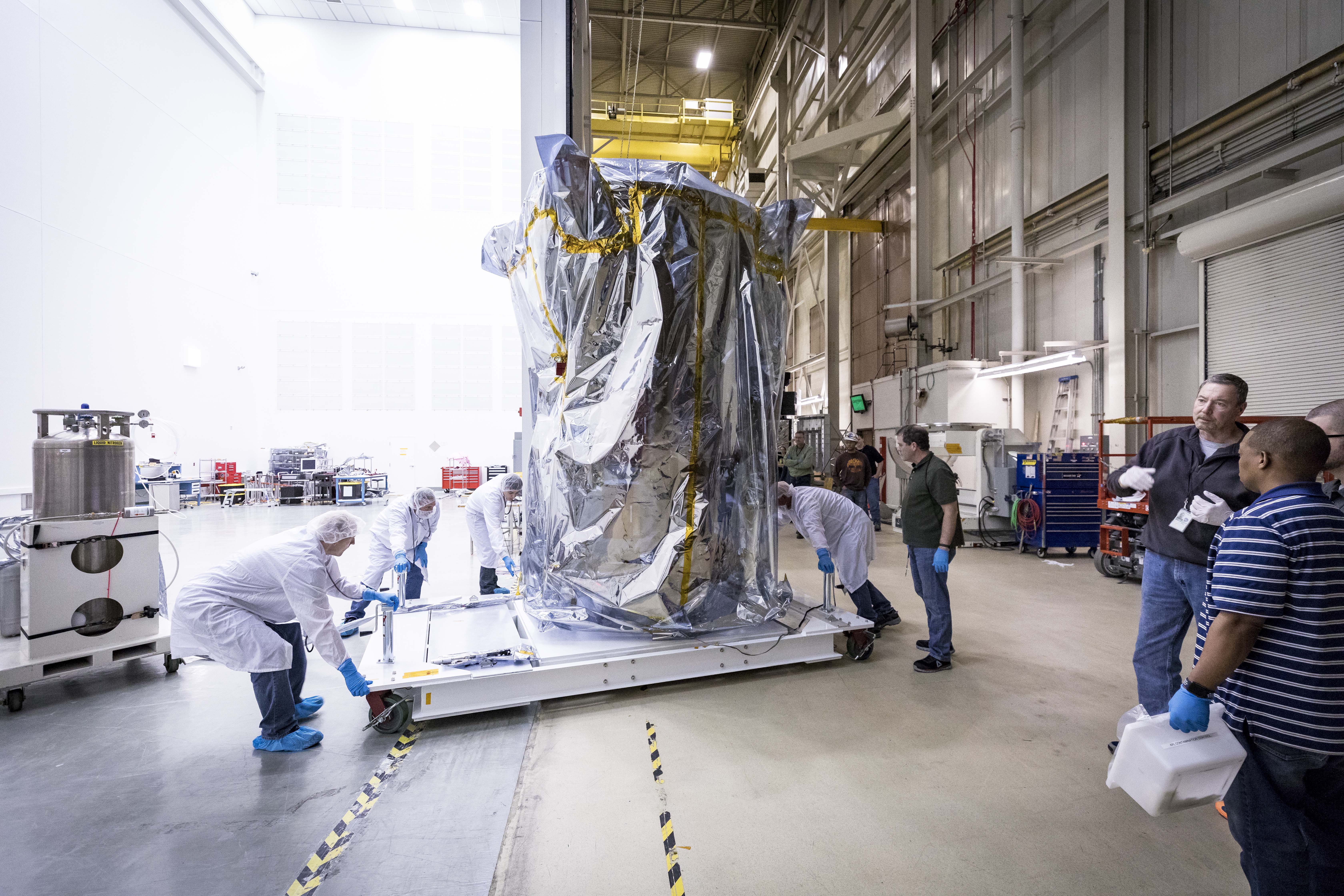
NASA’s Parker Solar Probe is wheeled into a clean room at NASA’s Goddard Space Flight Center in Greenbelt, Maryland, on March 24, 2018, after successfully completing space environment testing to verify the spacecraft is ready for operations in space. The probe will undergo about seven more days of testing outside the chamber, then travel to Florida for a scheduled launch on July 31, 2018, from NASA’s Kennedy Space Center in Cape Canaveral.
Credit: NASA/Johns Hopkins APL/Ed Whitman
High-Res Image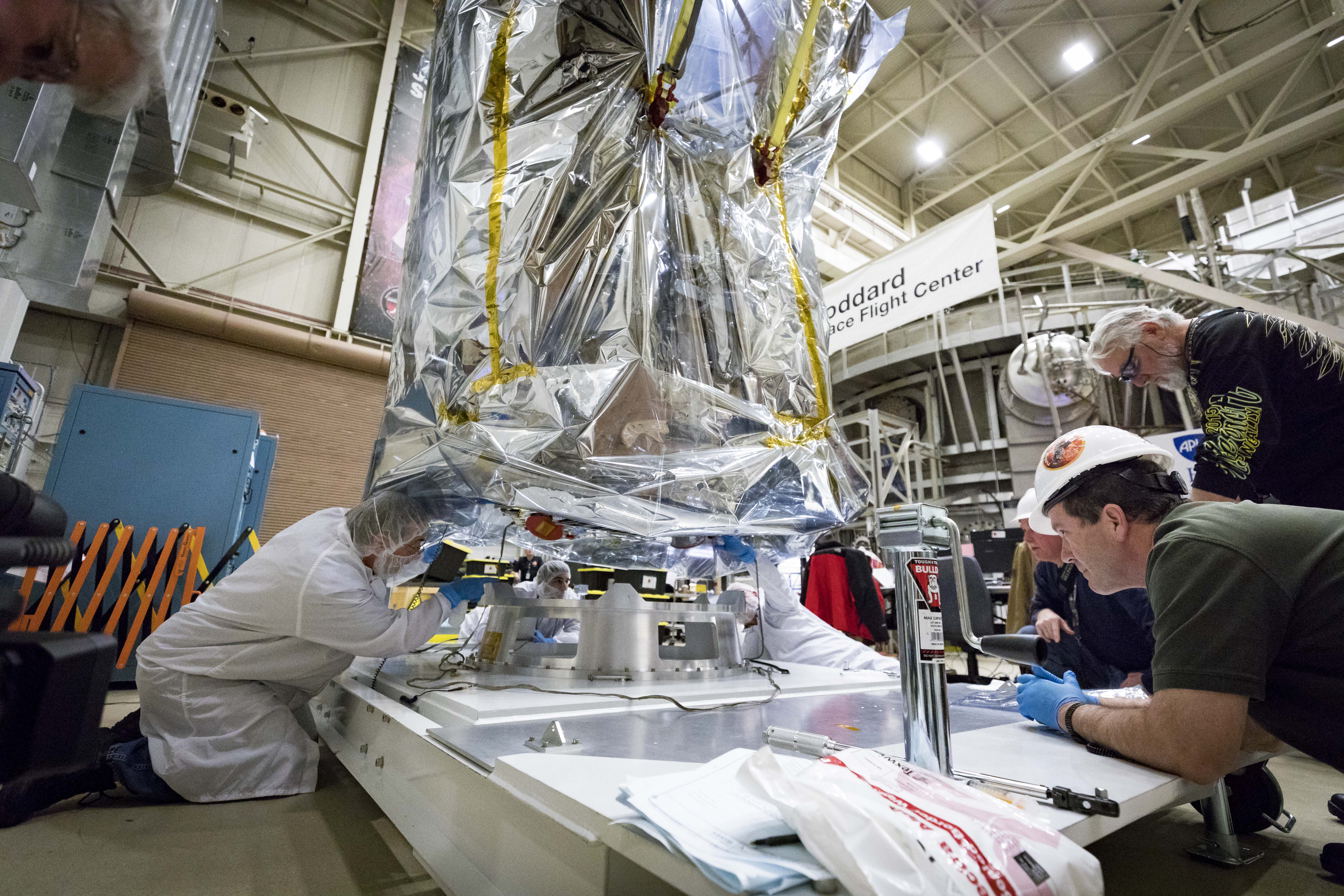
Parker Solar Probe team members connect the spacecraft to a specially built platform after removing the probe from the Space Environment Simulator at NASA’s Goddard Space Flight Center in Greenbelt, Maryland, on March 24, 2018. The probe will undergo about seven more days of testing outside the chamber, then travel to Florida for a scheduled launch on July 31, 2018, from NASA’s Kennedy Space Center in Cape Canaveral.
Credit: NASA/Johns Hopkins APL/Ed Whitman
High-Res Image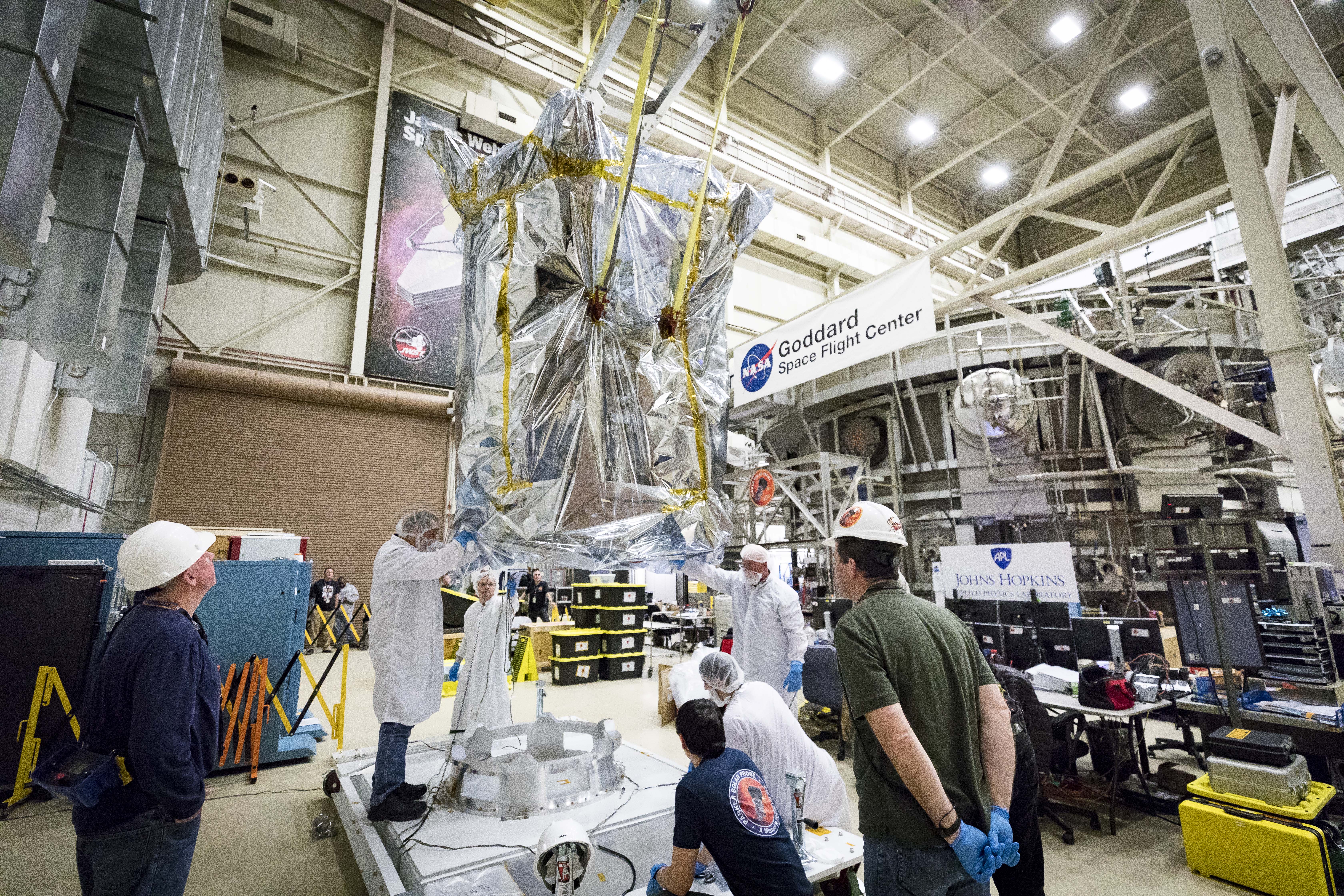
Members of the Parker Solar Probe team from the Johns Hopkins Applied Physics Lab and NASA’s Goddard Space Flight Center carefully lower the spacecraft onto a specially built platform on March 24, 2018. The probe has spent eight weeks undergoing space environment testing, including hot and cold cycling tests that mimic the temperature changes the spacecraft will experience during its seven-year long exploration of the Sun.
Credit: NASA/Johns Hopkins APL/Ed Whitman
High-Res Image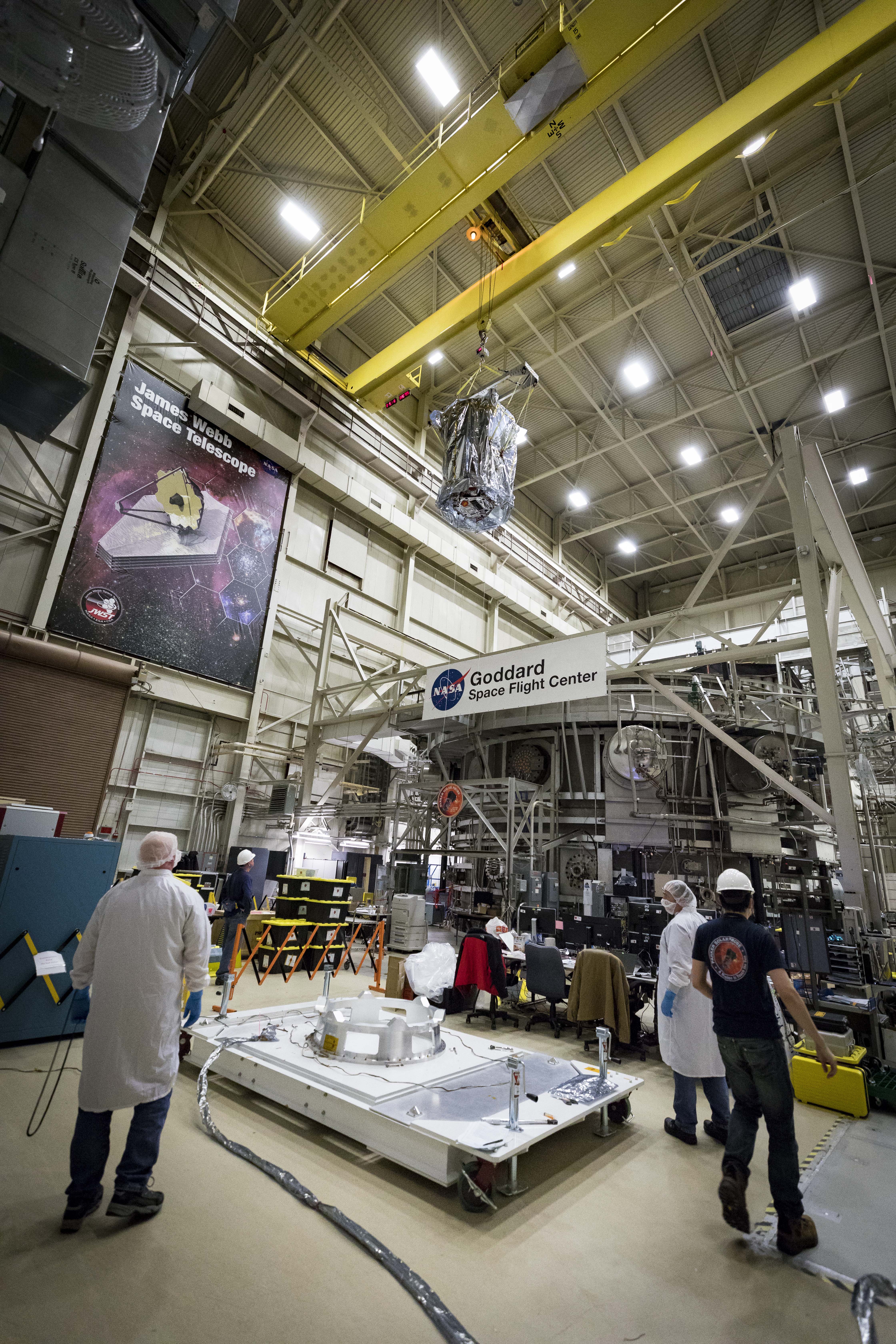
Members of the Parker Solar Probe team from the Johns Hopkins Applied Physics Lab in Laurel, Maryland, monitor the progress of the spacecraft as it is lifted from the Space Environment Simulator at NASA’s Goddard Space Flight Center in Greenbelt, Maryland, and lowered to the custom platform visible in the foreground. The spacecraft has spent eight weeks undergoing space environment testing in the thermal vacuum chamber before being lifted out on March 24, 2018.
Credit: NASA/Johns Hopkins APL/Ed Whitman
High-Res Image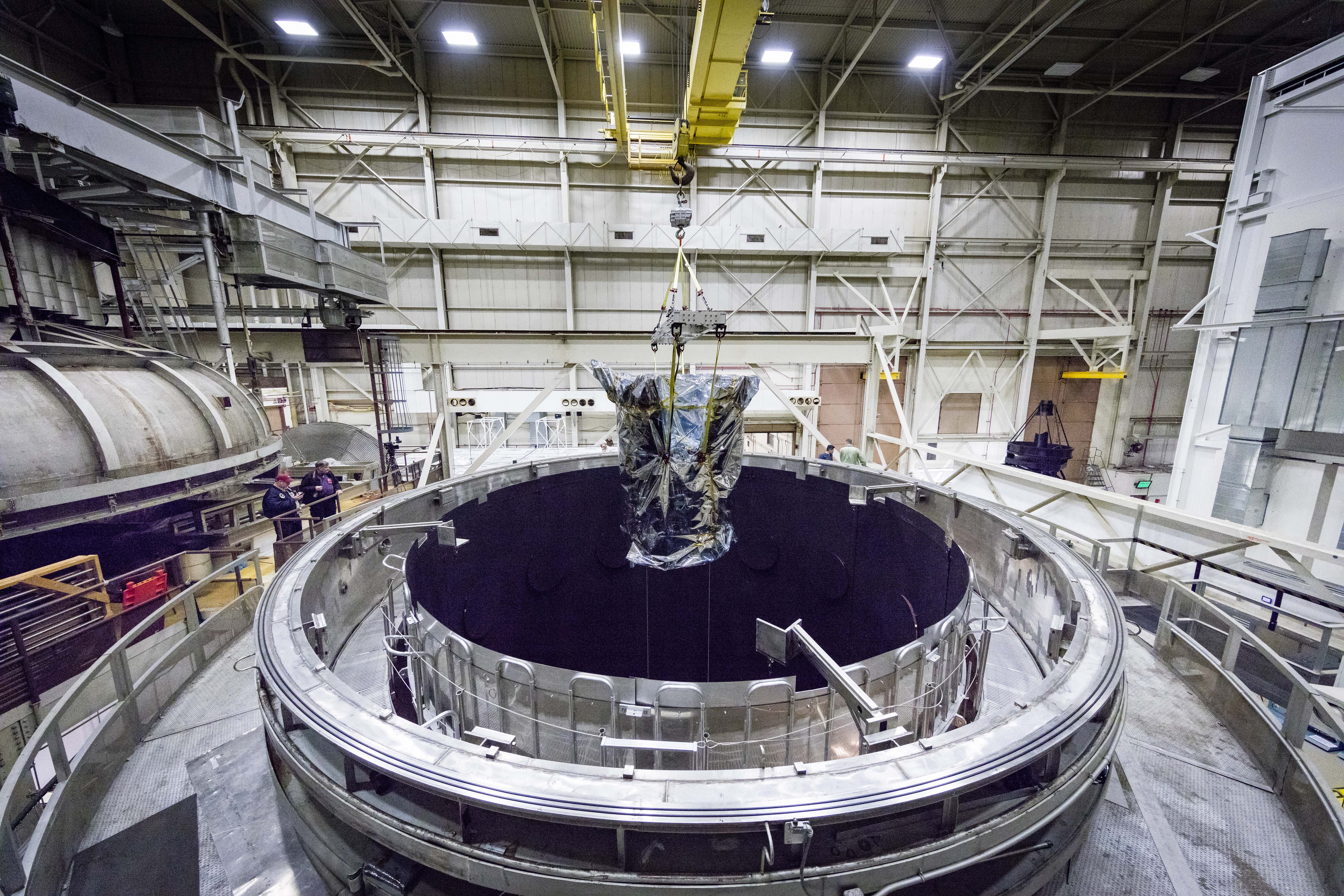
Parker Solar Probe is lifted out of the Space Environment Simulator at NASA’s Goddard Space Flight Center in Greenbelt, Maryland, on March 24, 2018. The spacecraft has spent eight weeks undergoing space environment testing in the thermal vacuum chamber. After about seven more days of testing outside the chamber, Parker Solar Probe will travel to Florida for a scheduled launch on July 31, 2018, from NASA’s Kennedy Space Center in Cape Canaveral.
Credit: NASA/Johns Hopkins APL/Ed Whitman
High-Res Image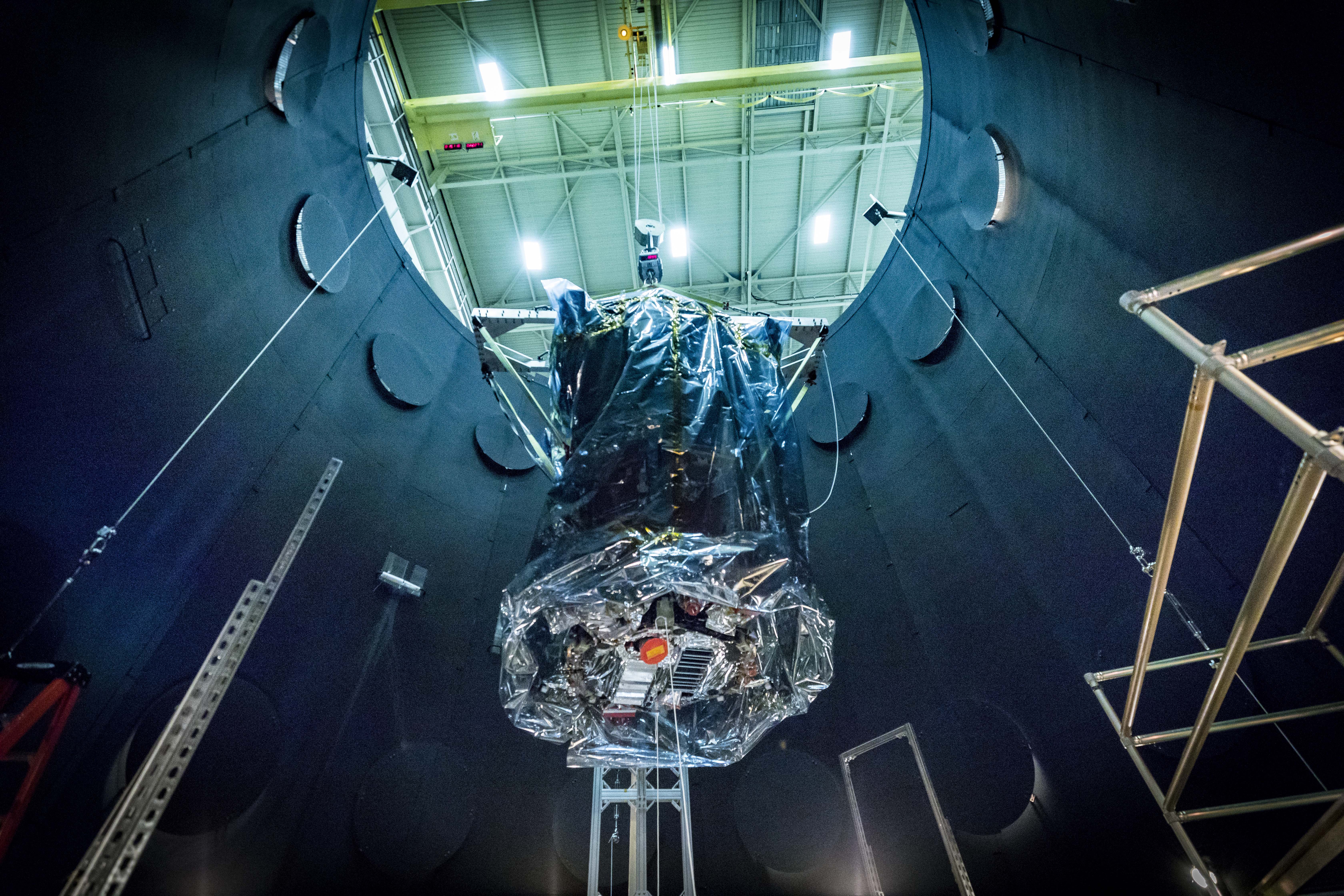
NASA’s Parker Solar Probe is carefully lifted from the Space Environment Simulator at NASA’s Goddard Space Flight Center in Greenbelt, Maryland, on March 24, 2018. The probe has spent eight weeks undergoing space environment testing, including hot and cold cycling tests that mimic the temperature changes the spacecraft will experience during its seven-year long exploration of the Sun.
Credit: NASA/Johns Hopkins APL/Ed Whitman
High-Res Image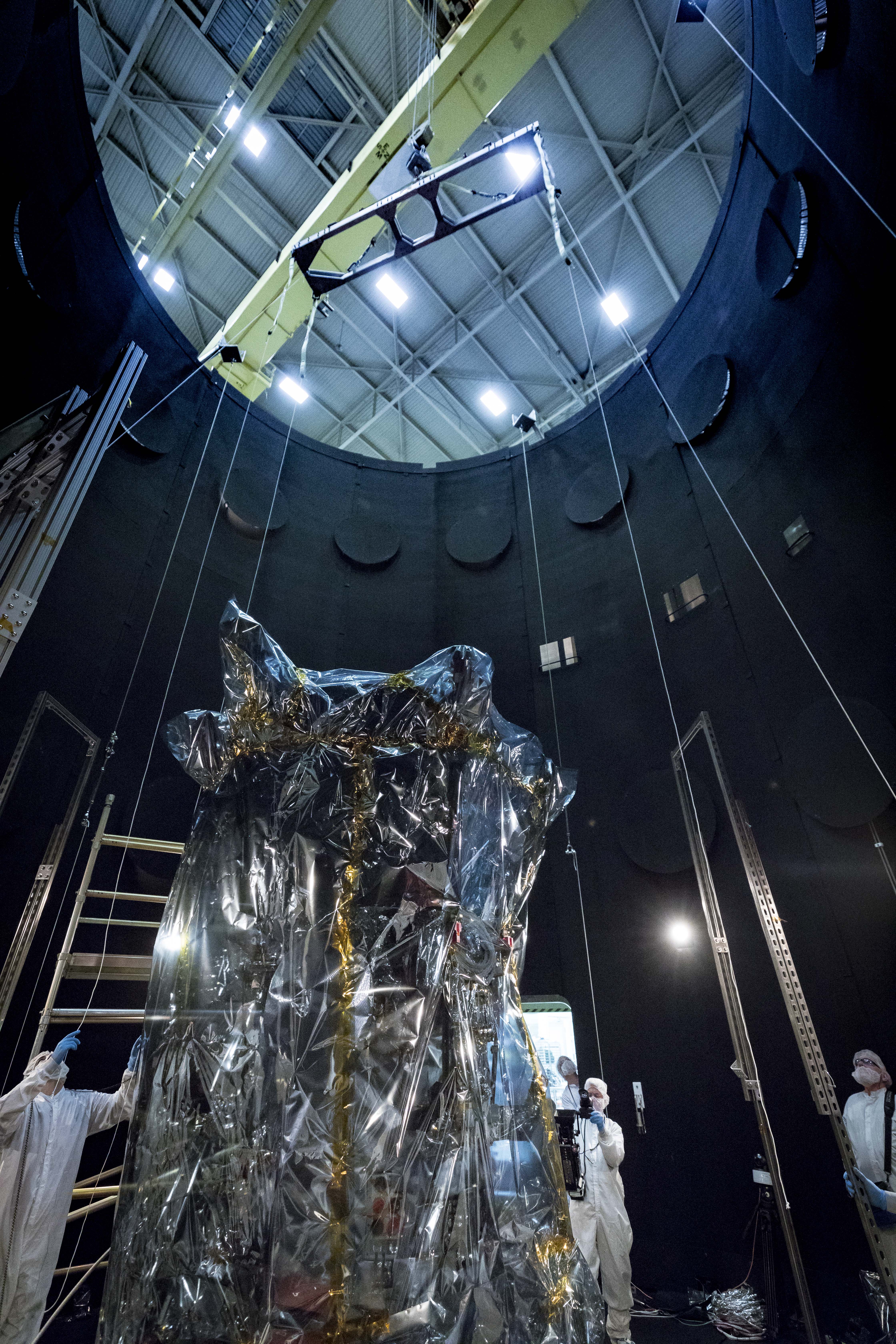
Members of the Parker Solar Probe team prepare the spacecraft to be lifted from the Space Environment Simulator at NASA’s Goddard Space Flight Center in Greenbelt, Maryland, on March 24, 2018. The spacecraft has spent eight weeks undergoing successful testing in the Space Environment Simulator to ensure that the mission will operate as planned during its seven-year long exploration of the Sun.
Credit: NASA/Johns Hopkins APL/Ed Whitman
High-Res Image